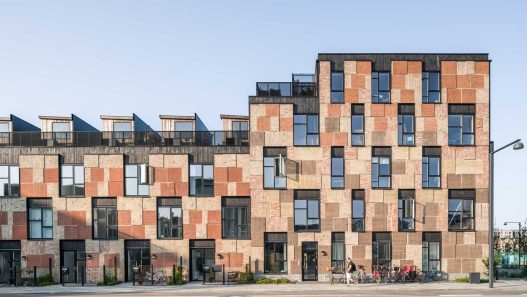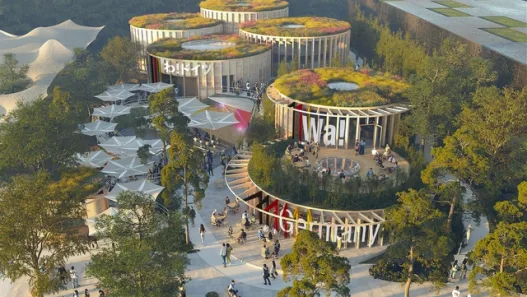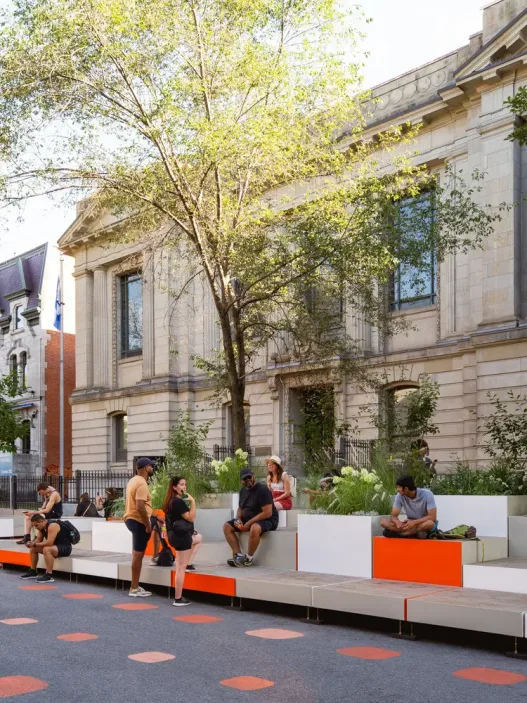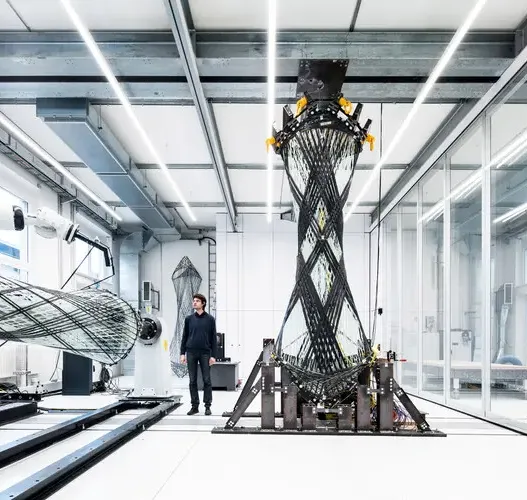Architectural ideals are guiding principles that shape how architects envision and create spaces. These ideals encompass aesthetics, functionality, sustainability, and the emotional impact of buildings on their users. While many architects enter the profession with certain ideals, their experiences in the field often lead to profound shifts in their perspectives. This research reflects the dynamic nature of the profession, emphasising how architects’ ideals evolve from education to practical experience.
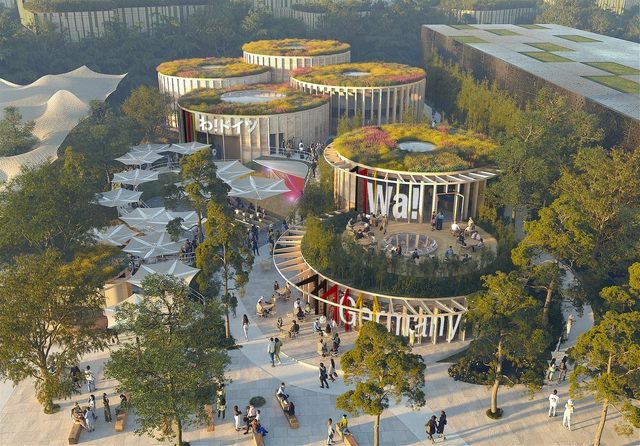
Defining Architectural Ideals
At their core, architectural ideals represent a blend of artistic vision, technical skill and social responsibility. They are manifested in the desire to create structures that are not only visually appealing, but also serve the needs of communities. These ideals are influenced by personal philosophies, cultural backgrounds and the socio-economic contexts in which architects operate. For example, an architect may initially prioritise innovative design or cutting-edge technology, but over time may come to value user comfort or environmental sustainability more.
The Role of Education in Shaping Ideals
Architectural education forms the basis of these ideals. In schools, students are exposed to a variety of theories, historical styles and design philosophies. They learn to appreciate beauty in form and function, often through projects that encourage creativity and experimentation. However, the academic environment can sometimes disconnect students from the realities of building practice and client needs. Although they are encouraged to think outside the box, they may not yet grasp the constraints of budgets, regulations and real-world challenges that will shape their future work. This stage of education is very important as it equips prospective architects with initial ideals that will guide their future decisions.
Impact of Historical Context
The historical context in which architects work also plays an important role in shaping their ideals. Architecture is deeply intertwined with the cultural, political and economic climates of different periods. For example, during periods of rapid urbanisation, architects may focus on efficiency and functionality to accommodate a growing population. In contrast, movements such as Modernism or Postmodernism emphasise ideals centred around innovation and individual expression. As architects move from education to practice, they are often influenced by the prevailing trends and social demands of their time, leading to a reassessment of their initial ideals.
Initial Expectations of the Profession
Many architects enter this field with high hopes and great expectations. They imagine themselves as creators of iconic structures or transformers of the urban landscape. This excitement often stems from idealistic depictions of architecture in the media and education, where freedom of design and artistic expression are emphasised. But the reality of the profession can be quite different. Architects quickly learn that the process involves collaborating with clients, overcoming bureaucratic obstacles and addressing practical constraints. The transition from idealism to realism is an important turning point that can reshape architectural philosophies.
Understanding the Importance of Practical Experience
Practical experience is invaluable in shaping and refining architectural ideals. As architects participate in real-world projects, they encounter a variety of challenges that force them to adapt their ideals to meet practical needs. They learn the importance of balancing aesthetics and functionality, understanding client desires, and adhering to building codes. Furthermore, working on projects ranging from residential to large commercial buildings exposes architects to different perspectives and methodologies. This hands-on experience fosters a more nuanced understanding of architecture, leading to a more holistic approach that considers not only the building itself, but also its impact on the environment and society.
In conclusion, the journey from educational ideals to practical realities is a transformative experience for architects. As they navigate the complexities of the profession, their ideals evolve and they gain a deeper understanding of the multifaceted nature of architecture. This evolution ultimately enriches their work, enabling them to create spaces that resonate in both beauty and purpose.
Architecture is often seen as a blend of art and science, where creativity meets functionality. But the journey from an idealistic architecture student to an experienced professional can be transformative. As architects immerse themselves in real-world projects, their initial ideals can change dramatically, shaped by practical experience and the complexities of the profession. This research explores how architects’ perspectives evolve as they move beyond the classroom and into the dynamic environment of construction and design.
Transition from Theory to Practice
In academia, architecture is often portrayed as a field of boundless creativity where ideas soar without the weight of real-world limitations. Students are encouraged to push boundaries by exploring avant-garde designs and innovative concepts. But when architects enter the working world, they quickly realise that translating theoretical knowledge into practice requires overcoming numerous challenges.
This transition involves a steep learning curve. Architects must adapt their designs to comply with building codes, zoning laws and safety regulations that may restrict their creative vision. They learn that the beauty of a design must also consider practicality, sustainability and the needs of society. This change can be jarring, but it often leads to a deeper understanding of how architecture affects everyday life.
Real World Challenges Architects Face
One of the most important aspects of working in the field is facing real-world challenges. These challenges can range from logistical issues such as coordinating with contractors and managing timelines, to navigating unpredictable site conditions that can derail even the best laid plans. Architects also have to grapple with the intricacies of human behaviour and the ways in which people interact with spaces, which can differ greatly from what was envisaged at the design stage.
For example, an architect may design a beautiful public park with open spaces and seating areas, only to realise that the community prefers a more enclosed environment for privacy. This real-world feedback can force architects to rethink their designs and adapt in ways they may not have anticipated during their work. Such experiences teach architects the importance of flexibility and sensitivity in their work.
Balancing Creativity and Constraints
As architects gain experience, they often find themselves in a delicate dance between creativity and constraints. While the initial drive to create striking, innovative designs remains, the realities of the profession may impose limitations that require a reassessment of what is possible.
Architects learn to see these constraints not as obstacles but as opportunities for innovation. For example, the challenge of working within a tight budget can inspire creative solutions that still meet aesthetic and functional goals. An architect may discover that using locally sourced materials not only reduces costs but also increases the cultural relevance of a project. This balancing act between imagination and restraint becomes the hallmark of an experienced architect’s approach, blending creativity with pragmatism.
Client Expectations and Artistic Vision
Meeting clients’ expectations is another critical aspect of an architect’s professional journey. Early in their careers, architects may have strong personal artistic visions. But as they gain experience, they begin to realise that architecture is often a collaborative process that requires alignment with client wishes.
Clients may have specific needs, preferences or constraints that may differ from an architect’s artistic vision. For example, a client may prioritise a particular style or feature that the architect feels does not conform to the principles of good design. This is where effective communication becomes crucial. While expressing their vision, architects also learn to listen to and adapt to the client’s needs and find ways to integrate their artistic ideas within the framework of the client’s expectations.
Impact of Budget and Resources
Financial constraints are an ever-present reality in the field of architecture. Budgets can dictate the scale of projects, the materials used and even the applicable design elements. Architects are often faced with the challenge of creating effective designs within limited financial resources.
Experience teaches architects to be resourceful and innovative in their approach. They learn to prioritise key elements that align with the goals of the project and often opt for simpler solutions that continue to make a strong impact. This may involve using cost-effective materials or designing multifunctional spaces that maximise usability without inflating costs. Over time, architects become adept at creating value in their work, developing a keen understanding of how to achieve excellence within budgetary constraints.
Lessons learnt from field experiences
Lessons learnt by working in the field are invaluable. Architects begin to appreciate the importance of collaboration, adaptability and continuous learning. Each project offers new insights through successful outcomes or unforeseen setbacks.
Field experience develops a deeper understanding of the built environment and the myriad factors that influence design. By developing a strong sense of empathy, architects learn to consider the needs of various stakeholders, from clients and developers to the members of the community who will use the spaces they create. This holistic perspective enriches their designs and ultimately contributes to more meaningful and effective architecture.
In conclusion, the journey from student to professional architect is full of challenges and growth. As architects confront the realities of their work, their ideals evolve and they develop a more nuanced understanding of design. The interplay of creativity, constraints and collaboration shapes their professional identity and enables them to create spaces that are not only visually stunning, but also deeply resonant in the communities they serve.
Architecture is not just about making buildings; it is an ever-evolving discipline as architects gain experience and adapt to the ever-changing world around them. When architects step out of the classroom and into the field, their ideals often change dramatically. This journey of evolution reflects a mix of personal development, technological advances and societal needs. Let us now examine how these changes are manifested through various aspects of architectural practice.
The Evolution of Design Philosophy
When architects first enter the profession, they often have a set of ideals shaped by academic teachings and personal inspiration. However, real-world experiences challenge these concepts, leading to a profound evolution in their design philosophy. Initially, many architects focus largely on aesthetics, seeking to create visually striking structures that stand out in the urban landscape. As they engage with clients, communities and the environment, they begin to appreciate the wider context of their designs.
Through hands-on projects, architects learn that beauty is not just about appearance. They discover the importance of functionality, cultural meaning and emotional resonance in their work. Thus, the evolution of design philosophy turns into a journey that integrates artistic expression with practical considerations, leading to spaces that are not only beautiful but also meaningful and usable.
Change in Aesthetic Preferences
Architects may admire bold forms and experimental designs in the early stages of their careers. But as they gain field experience, their aesthetic preferences often shift towards a more contextualised approach. They begin to realise that architecture should be in harmony with its surroundings and the people living in it.
For example, an architect may initially favour sleek modernism, but later come to appreciate vernacular architecture that reflects the local culture and climate. This shift can be seen in the design of community centres or public spaces that prioritise local materials and traditional construction techniques and encourage a sense of belonging and identity among users.
Integrating Sustainability Practices
Sustainability is no longer just a buzzword; it is a vital principle in contemporary architecture. As architects work on a variety of projects, they become more conscious of the environmental impact of their designs. They learn to incorporate sustainable practices not only as a response to climate change, but also as a way to promote healthier living environments.
Field experiences often emphasise the importance of energy efficiency, renewable materials and sustainable site planning. Architects begin to advocate designs that minimise waste, optimise natural light and increase biodiversity. A notable example is the shift towards green roofs and living walls, which not only contribute to energy savings but also improve urban air quality and provide habitats for wildlife.
Technological Developments and Impacts
The profession of architecture is deeply intertwined with technology. Early in their careers, many architects may focus on traditional design and construction methods. But exposure to digital tools, Building Information Modelling (BIM) and advanced materials fundamentally changes their approach.
As architects learn to harness technology, they can visualise complex structures, streamline workflows and improve collaboration with other professionals. This shift is enabling more innovative designs that push the boundaries of what is possible. For example, the use of 3D printing has ushered in a new era of creativity and efficiency in construction, enabling architects to create complex forms once thought impossible.
The Importance of Collaboration
Collaboration is one of the cornerstones of successful architecture. While students may approach projects as a solo endeavour, working in the field reveals the necessity of teamwork. Architects must engage with diverse stakeholders such as clients, engineers, urban planners and the community to create a cohesive vision.
Through collaboration, architects learn to appreciate the different perspectives and expertise that enrich their designs. They become adept at balancing competing interests and finding solutions that meet both aesthetic and functional requirements. An example is the design of urban parks, where architects collaborate with landscape designers and community members to create inclusive spaces that promote social interaction and well-being.
Case Studies of Changing Philosophies
Analysing specific case studies shows how architects’ philosophies can change dramatically after gaining field experience. Take the example of a young architect who initially focused on high-rise buildings. After working on a series of community-oriented projects, they began to prioritise affordable housing and mixed-use developments that encourage community involvement.
Another example involves an architect who started with a purely modernist approach but later adopted biophilic design principles after seeing the positive impact of nature on mental health. His projects have evolved to include more green space, natural materials and designs that encourage a connection with the environment.
These transformations reveal the dynamic nature of architectural practice. Each architect’s journey reflects personal growth and a greater understanding of their role in shaping the built environment. As they learn from their experiences, they contribute to a more thoughtful, sustainable and inclusive future in architecture.
As a result, the evolution of architects’ ideals is a rich tapestry woven from experiences in the field. As they navigate the complexities of design, sustainability, technology and collaboration, their philosophies mature and lead to more effective and empathetic architectural practice. This ongoing journey not only enhances their creativity, but also ensures that their contributions resonate in the communities they serve.
Architects enter the profession with a set of ideals and aspirations, often shaped by their education and early experiences. However, the realities of working in the field can significantly transform these ideals. This evolution is influenced by a variety of factors, including cultural context, practical challenges, and the need to adapt to the expectations of clients and societies. Understanding how these dynamics unfold in architectural practice reveals the complexity and richness of the profession.
Impact of Cultural Context
Cultural context plays an important role in shaping architects’ design approaches. Each region carries its own history, traditions and values that influence not only the aesthetics of buildings, but also their functionality and purpose. Architects must navigate these cultural landscapes to create buildings that resonate with the people who live in them. This understanding goes beyond mere aesthetics; it requires a deep relationship with the local community and its way of life.
Regional Influences on Design Choices
Each region has its own characteristics that shape architectural design. For example, in coastal regions, architects may focus on creating structures that can withstand harsh weather conditions while embracing the connection to the sea. In contrast, mountainous regions can inspire designs that provide protection from the elements while enhancing the landscape. As architects gain experience, they learn to appreciate these regional influences and integrate them into their work, resulting in buildings that reflect their surroundings and cater to the local climate.
Adapting to Local Needs and Traditions
Working in the field often reveals the need to adapt designs to local needs and customs. Architects may start their careers with grand visions, but soon realise that practical constraints require them to pivot. For example, a community may prioritise sustainability, encouraging architects to use environmentally friendly materials and methods. In addition, understanding local building techniques and materials can lead to more culturally appropriate designs that foster a sense of belonging among residents. This adaptive approach not only increases the functionality of buildings, but also deepens the architect’s connection with society.
Globalisation and its effects on architecture
Globalisation has brought countless influences on architecture, blending styles and ideas from around the world. While this exchange can lead to innovative designs, it also poses challenges. Architects may find themselves in tension between global trends and local traditions. The experience of working in different environments often pushes architects to seek a balance; they create buildings that are modern and contemporary while respecting the cultural heritage of their location. This balancing act becomes a critical aspect of evolving design philosophies.
Understanding User Experience in Different Cultures
As architects gain experience, they become increasingly attuned to the different needs of users in various cultural contexts. They learn that architecture is not only about creating visually striking structures, but also about enhancing the experiences of those who use them. For example, in some cultures communal spaces are vital for social interaction, while in others privacy is paramount. By observing how different communities interact with their environment, architects can design spaces that truly serve their purpose and foster a sense of community and belonging.
Architects as Cultural Interpreters
Finally, experienced architects often find themselves acting as cultural commentators through their work. They recognise that buildings can tell stories and reflect societal values. As they engage with communities, they realise the wider impact of their designs. This awareness drives them to create spaces that not only meet practical needs, but also provoke thought and dialogue about cultural identity, social issues and environmental responsibility. Through their evolving ideals, architects become not only creators of space, but also influential voices in shaping the cultural landscape.
As a result, the journey from aspiring architect to seasoned professional is marked by a profound transformation of ideals. The influence of cultural context, regional influences and the need to adapt to local traditions shape how architects approach their work. By understanding the user experience and positioning themselves as cultural interpreters, architects contribute to a richer, more meaningful built environment that resonates in the communities they serve.
An architect’s journey is as much about personal development as it is about professional achievement. As they navigate the complexities of design, collaboration and client expectations, their ideals often change in response to real-world experiences. This research examines how architects think about their careers, the challenges they face and how their aspirations develop over time.
Architects’ Reflections on their Career Journeys
Every architect begins with a vision – a dream to create spaces that inspire, provoke thought and enhance the human experience. But as they move from academic training to the practice of the profession, their ideals begin to reshape. Many architects realise that the realities of deadlines, budgets and client demands can sometimes conflict with their artistic aspirations. This conflict often leads to deep reflection on their initial motivations.
Experienced architects often describe moments when their passion for design is tested. They learn to balance creativity with functionality and understand that a great design must not only be aesthetically pleasing, but also serve the needs of its users. This balance requires a deep understanding of the social, environmental and economic factors that play a role in every project. Over time, architects develop a more nuanced perspective and often realise that their role is not simply to create, but to facilitate a vision that aligns with the needs of the wider community.
Personal Anecdotes from Experienced Architects
The personal stories of experienced architects reveal the transformative nature of their careers. An architect might share how their first project, a modest community centre, taught them the importance of listening to the voice of the community. They may have entered the field with grand ambitions to design skyscrapers, but they found deep fulfilment in creating a space that brought people together.
Another architect may describe a challenging project that pushed their boundaries and forced them to innovate under pressure. These experiences often provide valuable lessons in flexibility and adaptability. Such anecdotes emphasise that every project, regardless of scale, contributes to an architect’s growth and understanding of their role in society.
Common Regrets and Missed Opportunities
Architects often encounter regrets when reflecting on their careers. Some express nostalgia for projects they did not undertake, either through fear of failure or the lure of more lucrative opportunities. Others regret not advocating sustainable practices more strongly in their first jobs and only later realise the long-term impact of environmental issues.
These missed opportunities can be powerful motivators. Many architects become advocates for change and use their experience to inspire young professionals to fearlessly pursue their ideals. The regrets of one generation can trigger a more progressive approach in the next, shaping a more thoughtful architectural landscape.
Success Stories and Impacts
On the other hand, there are many success stories in the field of architecture. Many architects realise that the projects they are most proud of are those that resonate deeply with society. An architect designing a public library may enjoy seeing children engrossed in books in a space carefully created for them. This sense of impact fuels their passion and redefines their ideals.
Success is measured not only by the accolades received, but by the lives touched. Architects often celebrate projects that revitalise neighbourhoods or provide vital services to underserved populations. These achievements reinforce the belief that architecture can be a tool for social change and encourage many to pursue projects that align with their values.
Mentoring and its role in professional development
Mentoring plays a crucial role in shaping architects’ careers. Experienced architects often emphasise the importance of guidance from seasoned professionals. Through mentoring, young architects gain insight into navigating the complexities of the field, learning not only technical skills but also the value of collaboration and networking.
Mentoring can also provide a safe space to discuss challenges and aspirations. Many architects find that sharing their experiences with a mentor helps to clarify their values and goals and enables them to make more informed decisions in their careers. This relationship fosters a culture of continuous learning where ideals can evolve based on shared knowledge and experience.
Future Goals and Changing Ideals
As architects progress in their careers, their aspirations often change. What once seemed like the pinnacle of achievement can evolve into a deeper desire to make meaningful contributions to society. Many architects are beginning to prioritise projects that reflect their values, such as sustainable design or community engagement.
The future of architecture is poised to embrace innovative practices that prioritise inclusivity and environmental stewardship. As architects reflect on their own journeys, they may find themselves more committed to championing these ideals. Their experience in the field, coupled with a desire to leave a legacy, moulds the next generation of architects who are not only skilled designers but also passionate change-makers.
As a result, an architect’s journey is marked by growth, reflection and transformation. As they progress through their careers, their ideals are constantly tested and reshaped by real-world experiences. This dynamic process not only enriches their professional lives, but also contributes to a more thoughtful and responsive architectural environment.
Architecture is not just about designing buildings; it is a complex interplay of creativity, practicality and the ever-evolving needs of society. When architects begin their careers, they often have grand visions influenced by their education, personal experiences and the architectural movements they admire. However, as they immerse themselves in the realities of the profession, their ideals inevitably evolve. This transformation is shaped by a variety of factors such as client needs, budgetary constraints, legal requirements and the dynamic nature of urban environments.
In this research, we will explore the journey of architectural ideals, examining how real-world experiences shape and sometimes challenge the dreams of emerging architects. Through key concepts and real-world examples, we will uncover the rich tapestry of architectural practice and the lessons learnt along the way.
The Continuing Journey of Architectural Ideals
As architects progress in their careers, they discover that ideals are not static, but fluid concepts that change with experience. The journey from student to professional is full of moments of revelation where theoretical knowledge meets the gritty reality of construction sites, client demands and community needs. Each project becomes a lesson, a chance to reflect on what really matters in the built environment.
Summary of Key Insights
Over the course of an architect’s career, key insights emerge, such as the importance of collaboration, the necessity of adaptability, and the value of listening to diverse voices. Architects learn that their role goes beyond just design; they become dialogue facilitators, mediators between competing interests, and sustainability advocates. Real-world applications of these insights can be seen in projects that prioritise community engagement, such as participatory design workshops where local people contribute to the vision of their neighbourhood. This shift from individual ideals to collective aspirations enriches the architectural landscape.
The Dynamic Nature of Architecture
Architecture is inherently dynamic, responding to cultural shifts, technological advances and environmental challenges. Architects who once designed static forms learn to embrace change, realising that buildings must adapt over time. Consider, for example, the rise of modular construction and smart buildings, reflecting a growing awareness of efficiency and sustainability. Architects are now engaged in integrating renewable technologies and designing for resilience, reshaping their ideals to meet the urgent needs of our planet.
Fostering the Next Generation of Architects
As experienced architects reflect on their own journey, they realise the importance of mentoring the new generation. Encouragement can take various forms: sharing experience in design studios, providing internships or participating in community outreach activities. By fostering a mindset that values both creativity and practicality, experienced architects can inspire new talent to innovate while remaining grounded in reality. The exchange of ideas between generations is crucial, allowing new perspectives to challenge established norms and enrich the profession.
Final Thoughts on Ideals in Practice
The evolution of architectural ideals is a testament to the endurance and relevance of the profession. Architects learn that while ideals change, the core mission remains the same: to create spaces that enhance the human experience. This commitment to service, empathy and innovation drives architects to explore new methodologies and technologies. It reminds us that architecture is not just about building buildings, but about shaping environments that improve lives.



